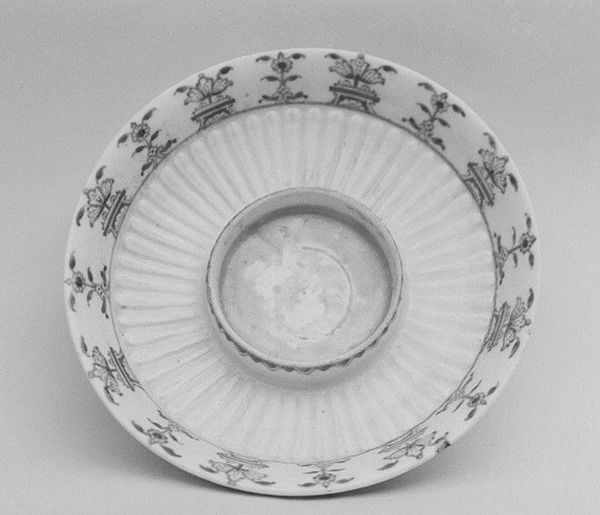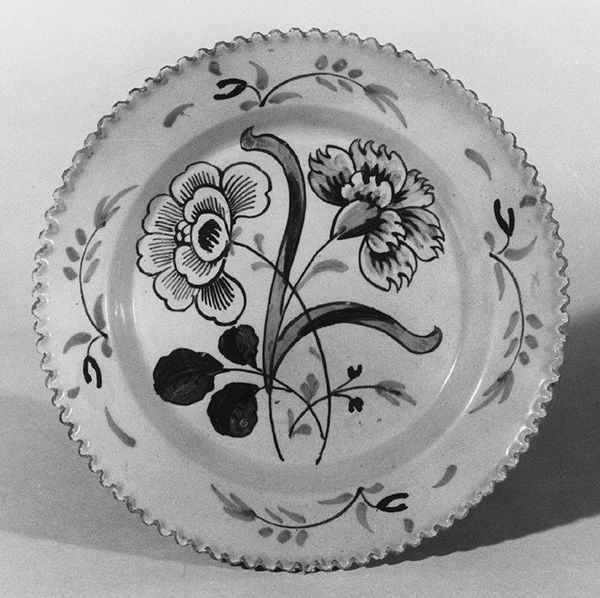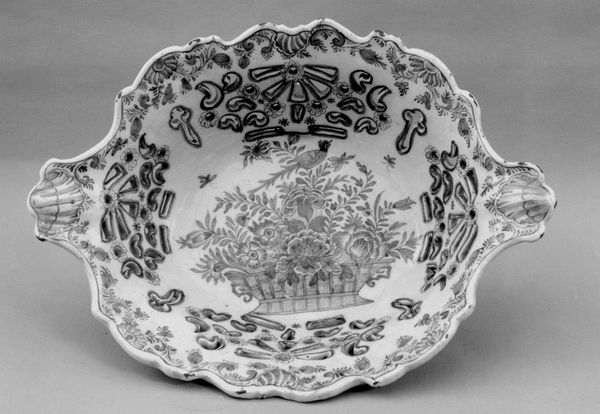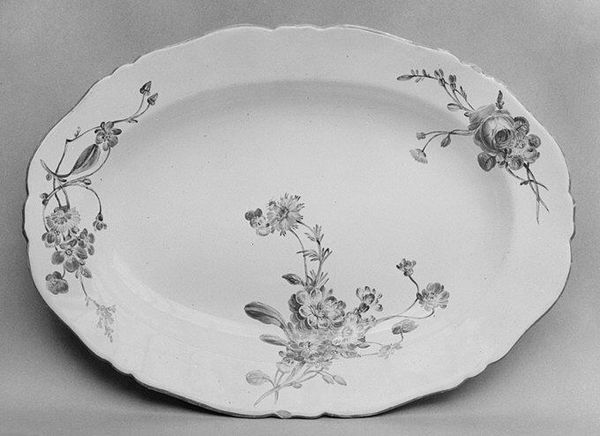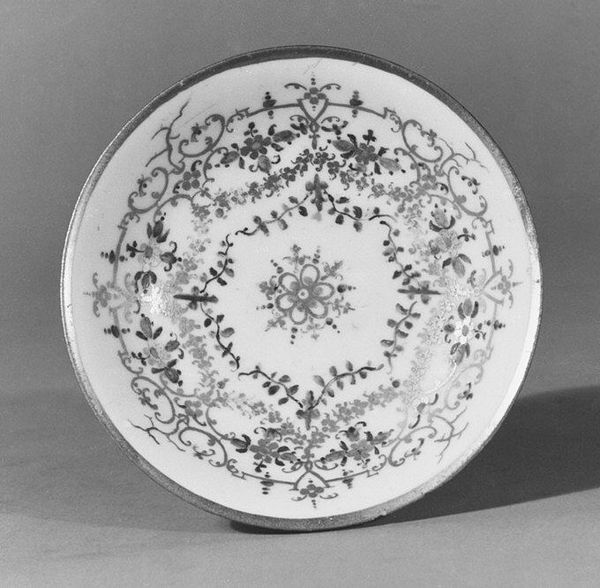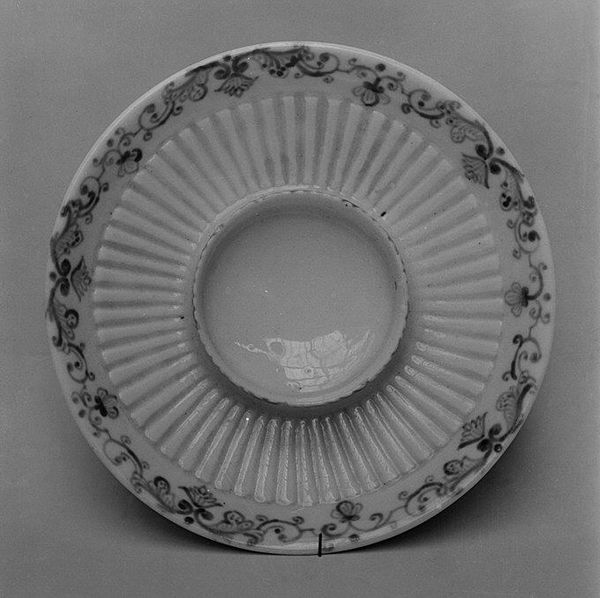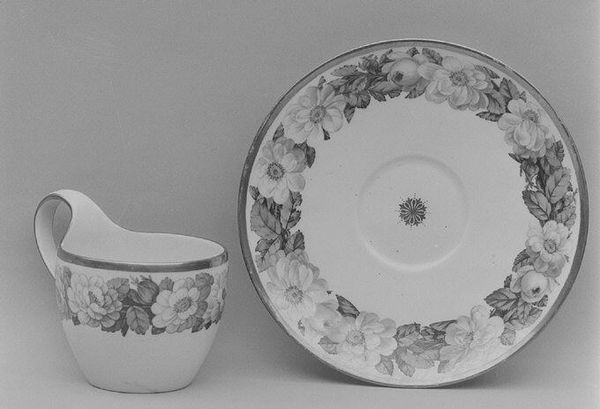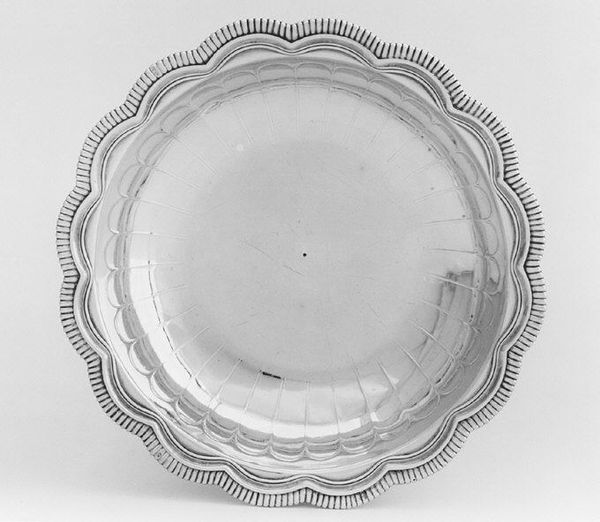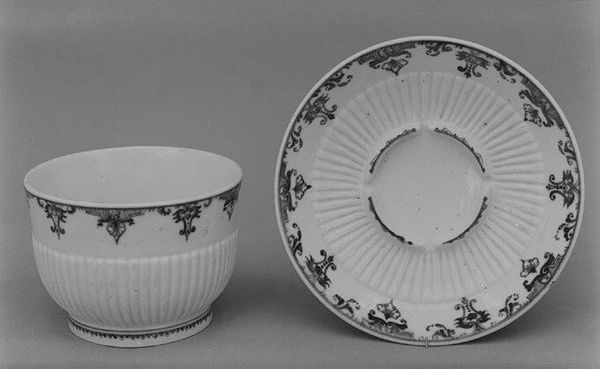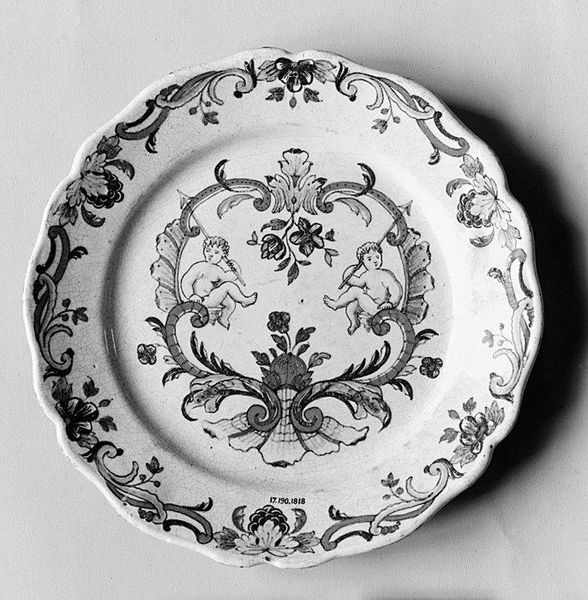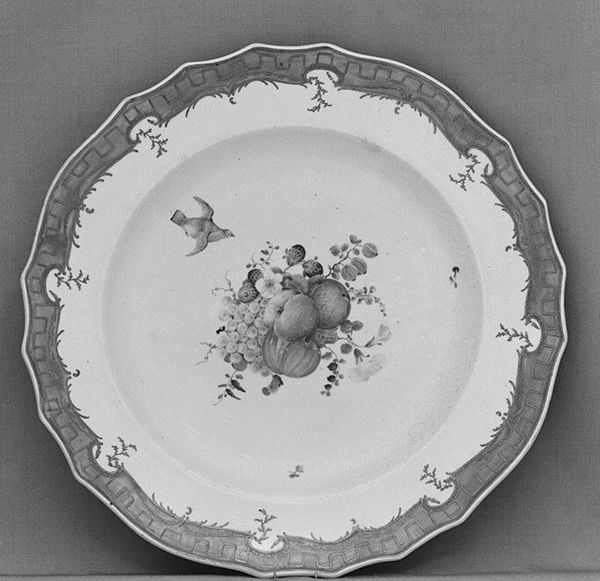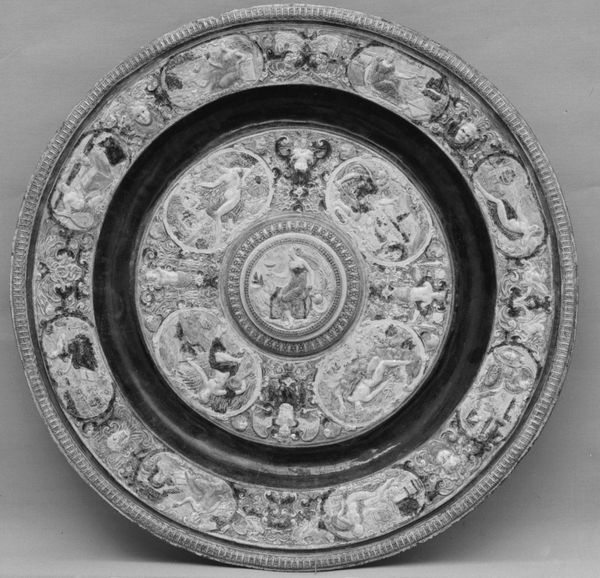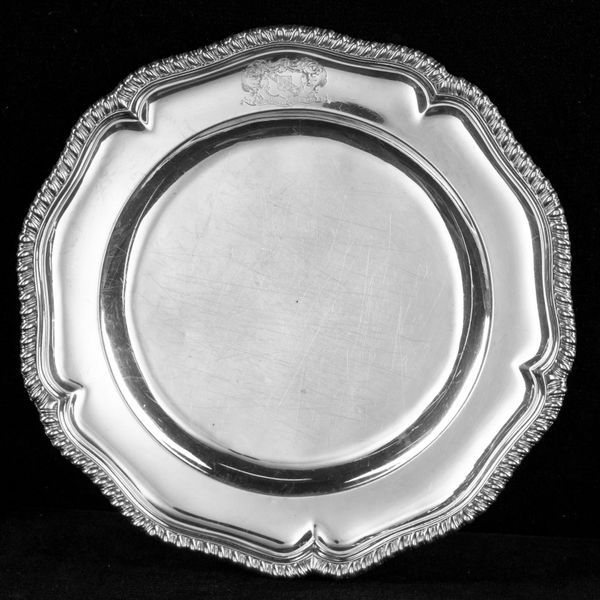
ceramic, porcelain, sculpture
#
ceramic
#
porcelain
#
sculpture
#
decorative-art
Dimensions: Diam. 7 1/4 in. (18.4 cm.)
Copyright: Public Domain
Curator: At first glance, it has a sense of controlled exuberance, doesn't it? All those swirling leaf forms contained by the geometric perfection of the plate itself. Editor: Indeed. Here we have a porcelain plate, part of a larger service created in the 19th century by the Derby Porcelain Manufactory. These objects provide insight into dining culture and social stratification in that era. Curator: I immediately sense echoes of the past in those stylized foliate motifs. They aren’t purely ornamental, are they? I mean, this decorative language has precedent. It's almost hieroglyphic. Editor: Well, floral and vegetal motifs, rendered with precision, were particularly favoured during this time. Derby Porcelain, competing in a market driven by aristocracy, used elaborate designs to assert status. But your notion about it operating as visual language is interesting, the plate acting as more than mere utilitarian object. Curator: Utilitarian it may be, but these repetitive patterns – scrolls, leaves, and formalized palmettes - they trigger a very specific response in me, linking this object to classical and even ancient Egyptian precedents. Palmettes are prevalent in Egyptian decorative motifs, often tied to ideas of regeneration. The act of eating from it could be considered symbolic. Editor: Precisely. Consumption as rebirth is a concept ripe for examination here. Then think about how something relatively fragile gains importance and historical longevity when it ends up preserved behind the walls of an institution like the Metropolitan Museum. That fundamentally alters the object. Curator: You raise an excellent point about museums influencing meaning. Originally, this plate served a domestic function within the private sphere. Today, in the context of the Met, it can touch upon wider questions concerning history, society, even philosophy, given that symbols persist over vast expanses of time. Editor: So, in some respects, the plate becomes more than it ever was by simply surviving, accumulating interpretive weight. A quiet vessel echoing past worlds, viewed in the present. Curator: It speaks to the human need for beauty and symbolic connection, whether it be on a dining table in 19th century or encased in glass in the 21st. Editor: Yes, a vessel laden with multiple meanings revealed across centuries.
Comments
No comments
Be the first to comment and join the conversation on the ultimate creative platform.
